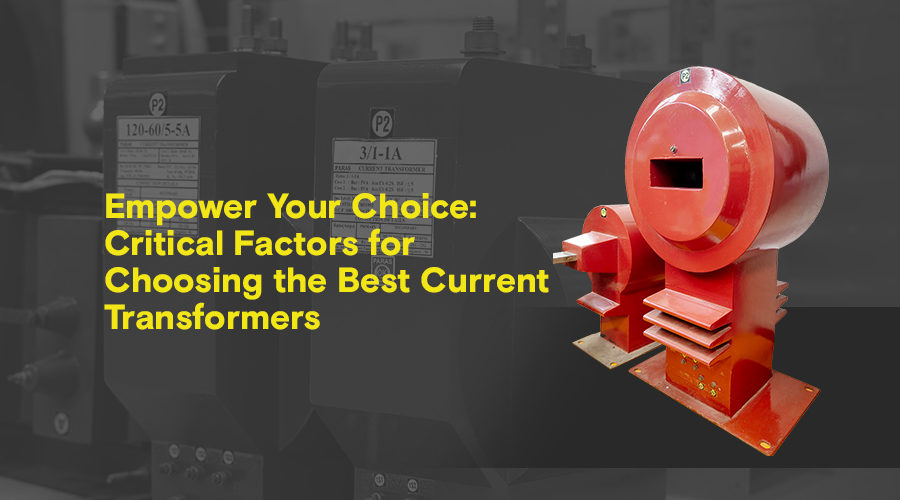Current transformers (CTs) are essential components in electrical systems, used to measure and
monitor electrical currents for various purposes, including protection, control, and metering.
Choosing the right CT for your application ensures accurate readings and proper system
functioning. In this blog, we’ll explore the key factors to consider when selecting current
transformers.
Factors to Consider When Choosing Current Transformers
1. Application Type
Metering:
Protection:
2. Primary Current Rating
The primary current rating refers to the current that flows through the primary winding of the
CT. It’s critical to choose a CT with a primary current rating that matches the current in the circuit
where it will be installed.
| Application | Typical Primary Current Rating |
| Residential Buildings | 50-200 A |
| Industrial Plants | 500-2000 A |
| Power Grids | Above 2000 A |
Selecting the correct primary rating ensures that the CT accurately transforms the current without
being overloaded.
3. Accuracy Class
The accuracy class defines the level of accuracy the CT provides. Depending on your application,
the accuracy required might vary
Metering CTs:
Protection CTs:
| CT Type | Typical Accuracy Class |
| Metering | 0.2, 0.5, 1.0 |
| Protection | 5P, 10P |
4. Burden Rating
The burden rating refers to the load the CT can support while maintaining its accuracy. The
burden is usually expressed in VA (Volt-Ampere). If the burden is too high, the CT may not provide
accurate readings.
| Burden (VA) | Application |
| 2.5 VA | Short distance between CT and meter |
| 5-10 VA | Longer distances or higher load |
5. Insulation Level and Safety
Since CTs are used in high-voltage environments, the insulation level is a critical factor. It
determines the CT’s ability to handle the voltage without breaking down. Choose CTs with
appropriate insulation for the voltage levels in your system to ensure safety and durability.
6. Core Type
Ring type CTs:
Wound type CTs:
7. Frequency
The frequency of the electrical system also impacts CT selection. Most systems operate at either
50 Hz or 60 Hz, but some industrial setups may have different frequencies. It’s important to
choose a CT designed to work at your system’s frequency for accurate performance.
CT Selection Process
8. Environmental Conditions
| Condition | CT Feature to Look For |
| High temperature | High-temperature rating |
| Humid or wet conditions | Waterproof or sealed CTs |
| Dusty environments | Enclosures with IP ratings |
9. Physical Size and Mounting
Choosing current transformer is essential for the accurate and efficient operation of
electrical systems. By considering the application type, primary current rating, accuracy class,
burden rating, core type, insulation level, and environmental factors, you can ensure that the CT
you select will meet your specific needs.
Paras Power provides a range of LT/HT current transformers designed to deliver reliable
performance in various applications. Whether you need a CT for metering, protection, or control,
our products are built to ensure accuracy and safety in any setting.

